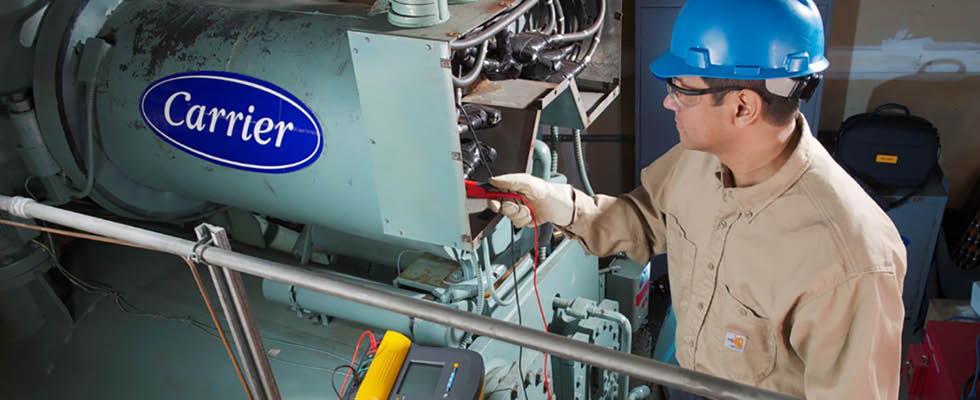
In the world of heating, ventilation, air conditioning and refrigeration (HVACR) mechanics, troubleshooting is an art form. Professionals rely on a multitude of tests and observations to diagnose and maintain systems efficiently. When dealing with compressors, one of the crucial methods gaining prominence is insulation resistance testing (IRT). This non-destructive technique allows users to assess the health of their compressor motor’s insulation, ensuring reliability and longevity.
Understanding Insulation Resistance Testing
IRT is like a health checkup for a compressor motor’s insulation. It involves supplying a controlled direct current (DC) voltage to the motor’s windings and insulation points to measure the current leakage rate. While no insulation is perfect, the key question is: How much does it leak, and is this leakage changing over time due to insulation breakdown or contamination? The latter point is the essence of predictive maintenance.
During an IRT, various parameters can be assessed, including continuity, coil or winding resistances, heating element resistances and more, all within the insulators. However, the critical aspect is detecting a short to ground, which signals a catastrophic failure. Once this occurs, it is often too late for preventive measures, leading to costly repairs and downtime.
Interpreting Insulation Resistance Values
While there is not a one-size-fits-all rule for pass/fail criteria, industry standards offer some guidance. The Institute of Electrical and Electronics Engineers (IEEE) 43 standard recommends a minimum acceptable value of 1 megohm plus 1 megohm per kilovolt of motor operating voltage. For instance, a 460-volt motor should have a threshold of 1.46 megohms. However, this standard does not apply to hermetically sealed motors submerged in liquid, which may require lower values as recommended by the manufacturer.
Modern insulations, developed since 1975, often have superior insulating properties, with IRT values reaching 20 gigaohms. These values can be deemed unacceptable if they drop below 100 megohms, regardless of surface contaminants on the windings.
Applying IRT to Hermetic Compressors
For hermetic compressors, IRT is a two-step process due to the unique operating environment. First, conduct an IRT to check for degradation in motor winding insulation. Then, check for contaminants that could affect the IRT results.
The initial IRT should be performed when the compressor is off, while the second one is conducted after the compressor has run for five to 10 minutes. The first test is more likely to expose contaminants within the oil or refrigerant, while the second is geared towards assessing the true motor
insulation resistance.
The Importance of IRT With POE Lubricants
As the industry shifts towards using polyolester (POE) lubricants with the phased-out hydrochlorofluorocarbon (HCFC) refrigerants, the significance of IRT grows. POE lubricants are hygroscopic, meaning they absorb moisture. Alongside moisture indicating sight glasses and oil/moisture sampling, IRT provides another means of estimating moisture within the oil.
Performing IRT
Here is a step-by-step guide on how to perform IRT for compressor motors:
1. Safety first: Never conduct IRT when the system is under a vacuum.
2. Isolate the compressor: Remove all wiring from the compressor terminals to isolate it.
3. Terminal maintenance: Clean the terminals and, if present, remove compressor terminal bars.
4. Ground connection: If possible, shunt compressor terminals together for testing.
5. Ground cleaning: Clean the compressor ground location of oxidation and moisture.
6. Temperature measurement: Measure the temperature of the compressor terminals. They should be above ambient air dewpoint to prevent moisture interference.
7. Ground lead attachment: Connect the ground lead to the compressor ground location using an alligator clip attachment.
8. Select test voltage: Set the meter to insulation test mode and choose 500 volts direct current (VDC) test voltage.
9. Test probe connection: Touch the test probe to the
shunted compressor terminals.
10. Initiate test: Depress the test button on the probe (or meter) for a duration of 60 seconds.
11. Record data: Record the resistance value and terminal temperature.
12. Restore connections: Remove the shunt across compressor terminals and restore electrical connections.
13. Operational test: Place the compressor in operation for five to 10 minutes.
14. Repeat test: Repeat steps one through 11 after the operational test.
Temperature Compensation
Temperature plays a crucial role in IRT, and readings must be compensated. For every 10 C deviation from a baseline temperature (e.g., 40 C), the resistance value doubles or halves.
Why Regular IRT Matters
Regular IRT is a maintenance best practice, as it allows HVACR mechanics to catch potential issues before they become catastrophic failures. With the costs of failures on the rise, the advantages of regular testing and tracking become evident.
Insulation Resistance & Compressor Life Spans
Several factors can impact insulation resistance and the longevity of compressor motors.
1. Improper dehydration: Moisture in the presence of refrigerant can lead to hydrofluoric acid formation, which can damage insulation.
2. Failure to ream tubing: Copper shavings in compressor oil due to improperly reamed tubing can reduce insulation.
3. Lack of inert gas: Not displacing oxygen during the brazing process can result in conductive copper oxides.
4. Refrigerant leaks: Low refrigerant charge elevates motor temperatures and stresses insulation.
IRT is a vital tool for maintaining the health and longevity of HVAC compressor motors. By regularly performing these tests and monitoring trends, users can proactively address issues before they lead to catastrophic failures, ensuring the continued performance of their systems.


